A collection of my porcelain and wood sculptural objects. Published by Ben Clarone Books. Available from Blurb.com
ClayandWoodTag: Daniel Harris
Trombones & Figs
Flash fiction submitted to a Flash Fiction contest.
Trombones-and-FigsSelf-Portrait: Contrapuntal Man
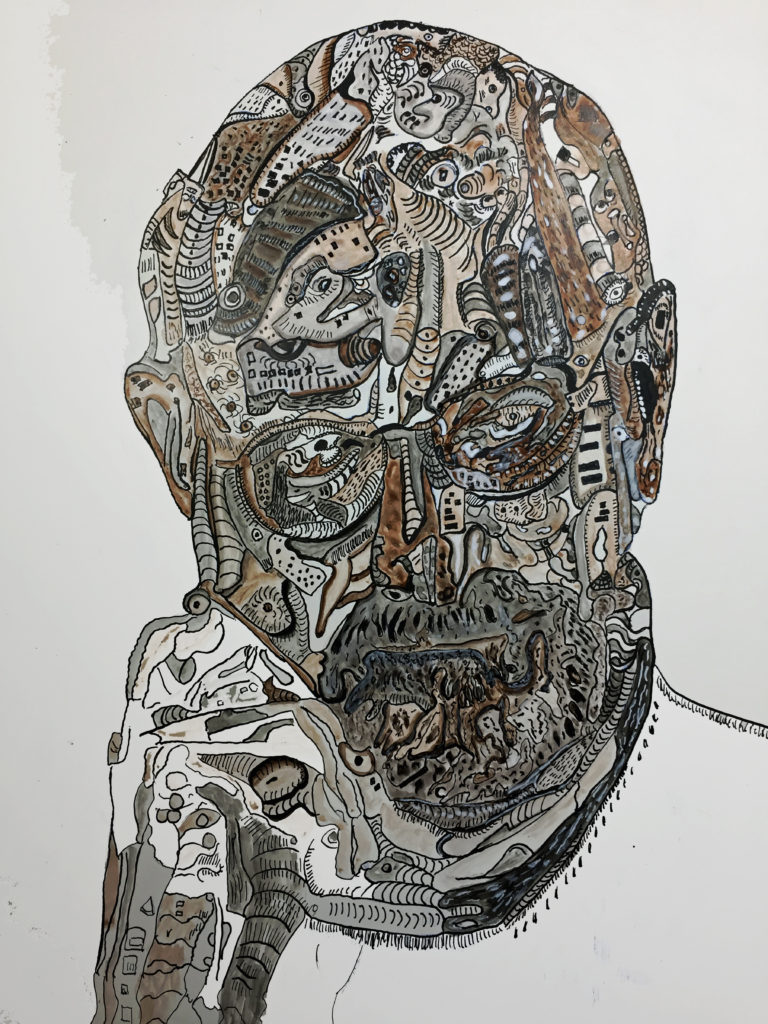
Speedball 102/107 dip pens, Dr. Phil. Martin Black, Van Dyke Brown and White India ink and washes on 12×16″ Ampersand Claybord. 2019
Story Mask Project
These are colored sketches for a new porcelain mask project. It will be similar to the Mask as Self Portrait project, but are intended to be “story masks.” They are made using Aquarelle pencils, water brush, dip pens and color India inks.
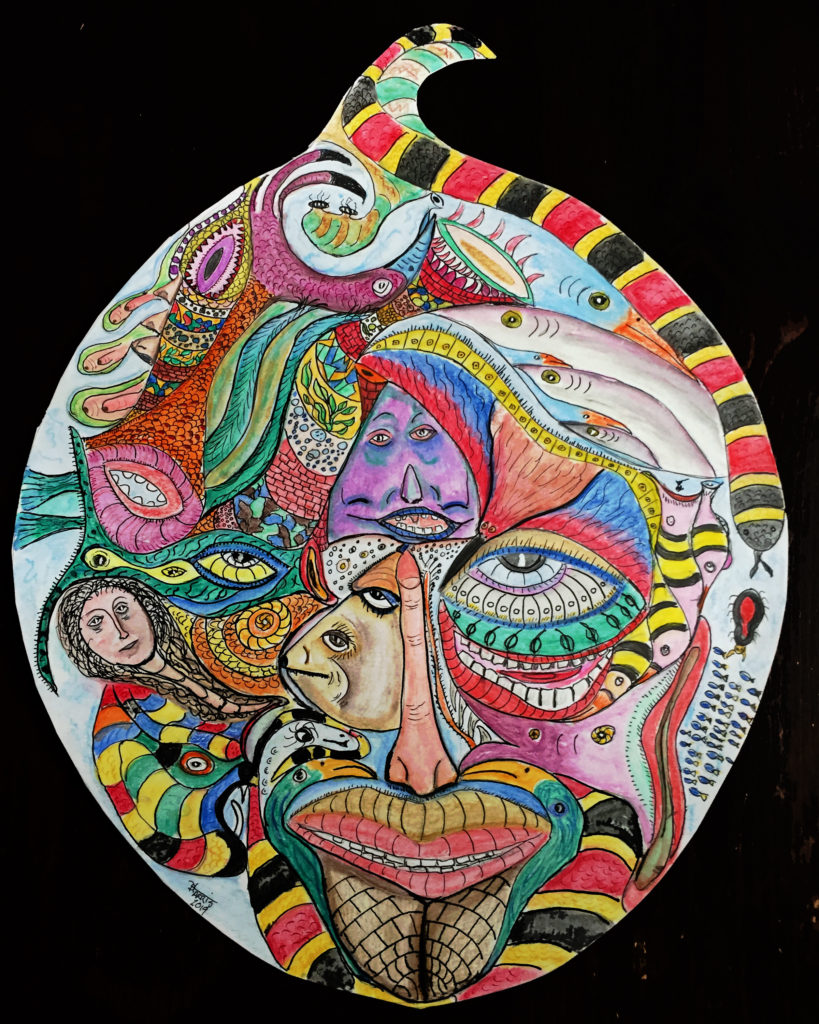
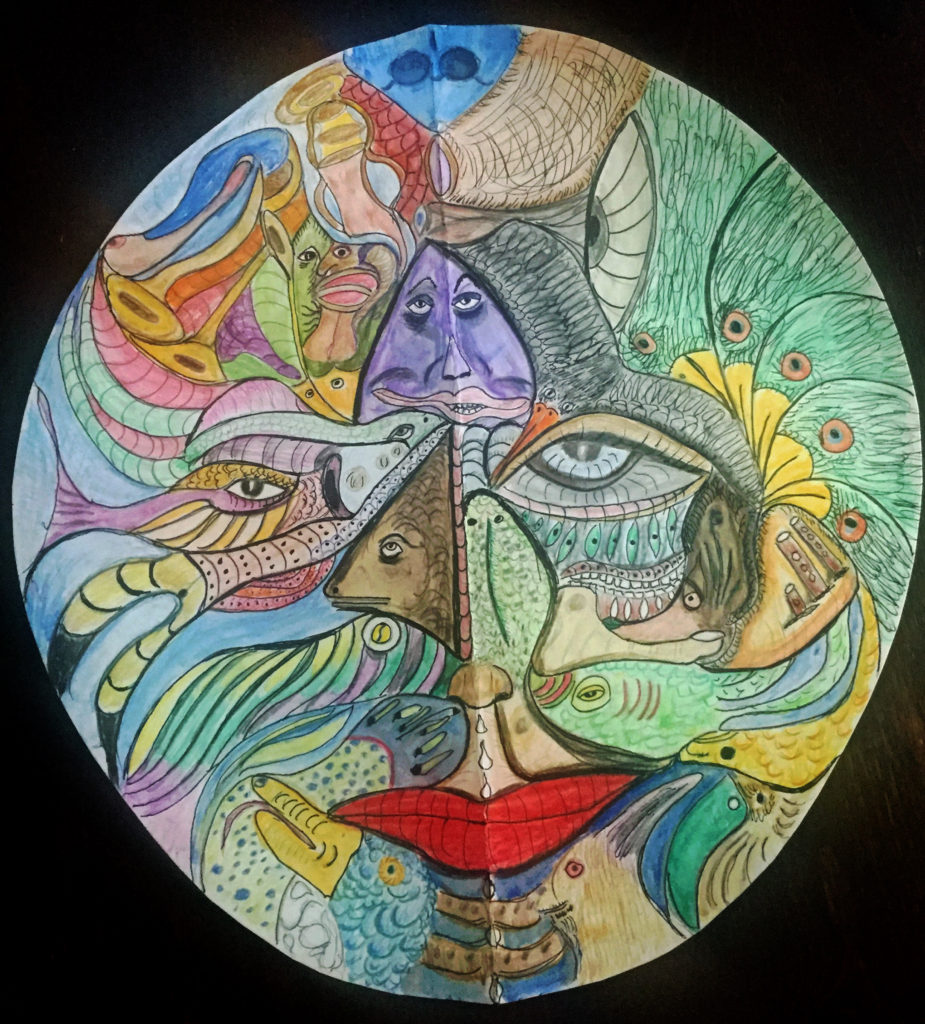
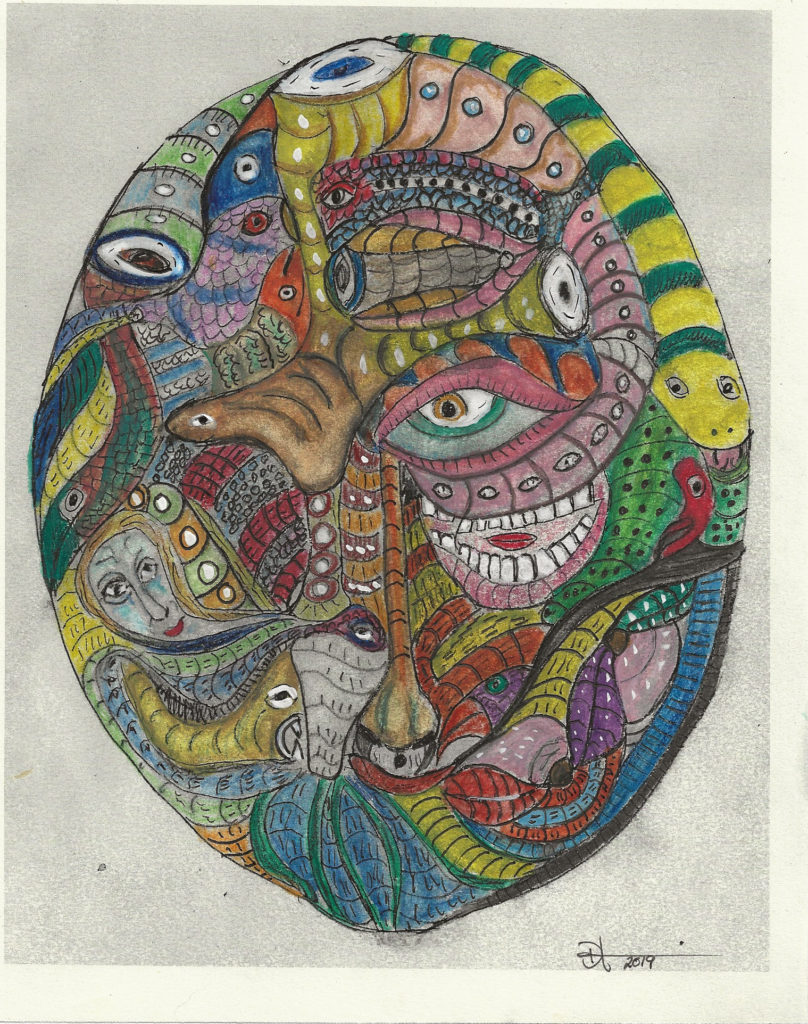
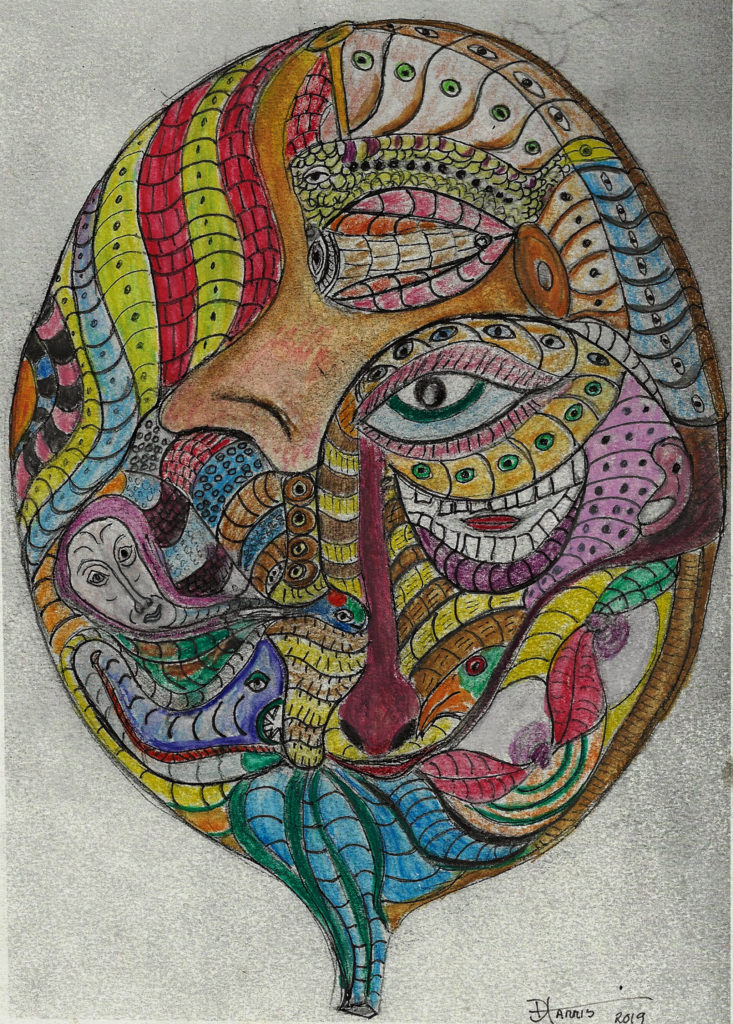
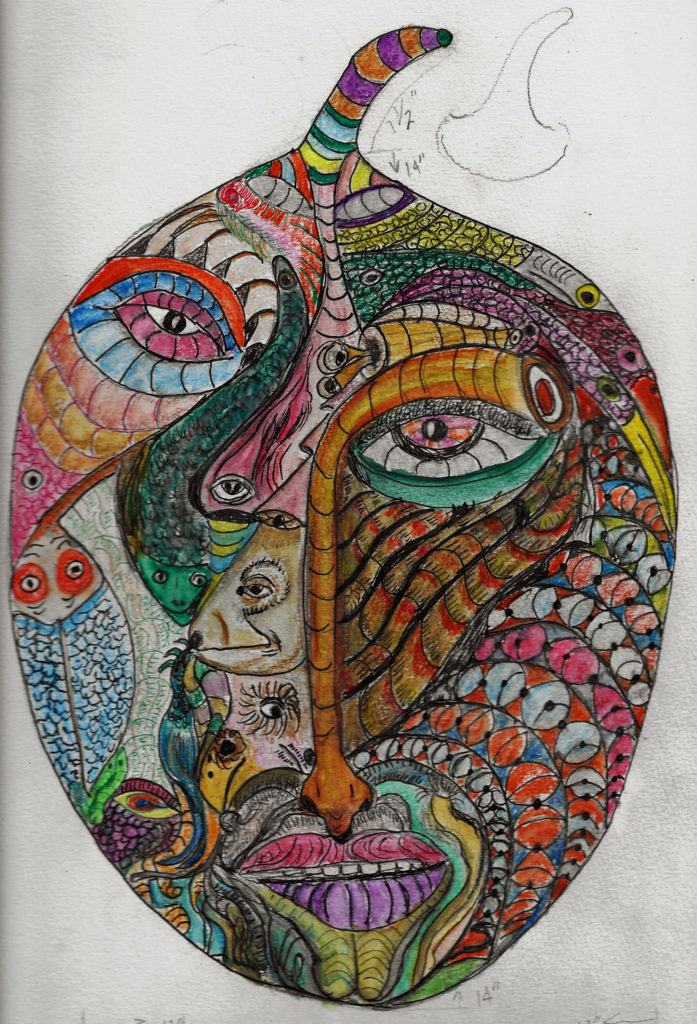
Process Music
During my tenure as a student at Eastman School of Music and Yale University’s School of Music, I kept searching for what I called a “New American Musical Language.” With the recommendation of Mel Powell, I attended the Bennington Composers Conference in 1967. There I made the happy acquaintance of Hall Overton. He was excited with my music and suggested I contact Steve Reich, one of his former pupils, when I returned to New York City in the fall. It wasn’t until the Spring of 1969 that I finally connected with Steve Reich at the New School in New York City.
In our lessons, we spoke frequently about “process” as a compositional tool and how it differed from modal, serial or more traditional compositional practices. We also discussed “phasing” techniques which figure prominently in Steve’s early tape & acoustic works. Among other topics we discussed was the psychoacoustic properties of repetition and what effects repetition had on the perception of real and imaginary sounds.
In all fairness, I must say that my prior training was invaluable and no doubt contributed to my early appreciation of Steve Reich’s music, as different as it was to any music I had been exposed to at that time, which included a host of musical “Mavericks:” Cage, Ives, Ruggles, Partch, Mingus, Monk, Dolphy, Rahsaan Roland Kirk, Ornette Coleman, et al.
I composed a number of pieces using process techniques which were well received. When various performers and conductors, commissioned me to compose a work for them, they all asked that I write something in the “Minimalist” style. I never considered the music of Reich, Glass, Riley, etc., minimal in any sense of the word. The sonic and musical worlds opened up by the close listening required of this music was anything but minimal. While there was an attraction for some persons to this music because of its hypnotic effect, to serious listeners there was a whole cosmos of sound, interactions, and developments to discover and enjoy.
In my own compositions in this technique, I strove to bring a synthesis of traditional performance practices: articulation, dynamics, expression; with techniques borrowed from tape music: phasing, delay, echo, and looping. In Holograms rhythmic and melodic cells are emphasized and enhanced, dissonances and intervals are used to create multiple textures, difference & summation tones, looping, and phasing. In Mozart Doesn’t Phase Me Anymore for Five Trombone Choirs, five tape delays (ten reel-to-reel tape recorders) were used to build textures from simple melodic cells based on the Tuba Mirum of the Mozart Requiem. Sopwith Hemke for Four Soprano Saxophones and Tape has the live performers adding expression and articulation to a Mobius loop of 2, 3 & 4 soprano saxophones. Tempi Modulatus for Solo Clarinet & Wind Ensemble combines traditional counterpoint techniques with tape delay techniques to create metric and tempo modulations that create changing textures and rhythmic vitality.
The score for Holograms and a short sampled electronic version can be seen and heard below.